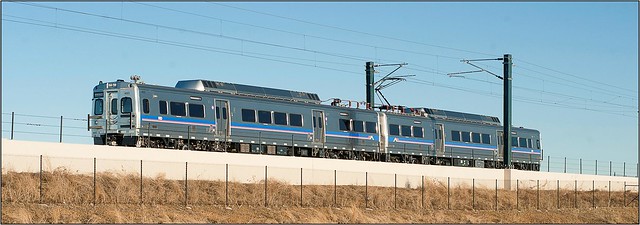 |
Wind damage is no stranger to the
northeastern Colorado plains.
Photo: Sherrif Nestor, Lincoln
County Sheriffs Office |
This weekend marks a mostly forgotten, strange-but-true event that I find pretty remarkable. Fully 132 years ago, residents out on the eastern plains of Colorado and southwest Nebraska were experiencing a wind storm of such severity that, though it had no vortex or definable center, it did damage worthy of a tornado. It tore the roof off of Akron's roundhouse of the Chicago, Burlington & Quincy railroad. However, what was truly remarkable were the events of a couple hours on a Wednesday afternoon, March 23rd, 1884.
What follows is verbatim from Trains & Travel's August 1953 issue from a 1934
Railway Age article retelling of what the Lincoln, Nebraska
State Journal reported (reprinted by the 1884 Railroad Gazette).
"It will be remembered that on Thursday⚒ March 26, there was a wind which amounted almost to a tornado. At Akron, it unroofed the roundhouse and did other damage. About 5 o'clock that evening, the wind, at its strongest, started a train of eight box cars loaded with coal that was standing on the side track. This eight-car train ran through the split switch and on eastward over the main track. The track was nearly level, but some distance this side it is downgrade, and the wind was so strong that it moved the cars more rapidly than passenger-train speed.
"The operator at Akron noticed the runaway train as it broke loose and sent the alarm down the line. Everything was sidetracked and the crazy train had the right of way. The Cannon Ball train westward was sidetracked just in time. Marvelous as it may seem, those runaway cars ran 100 miles, passing eight stations, over a track which is for a great part of the distance almost perfectly level, with no propelling power but the wind and their own inertia. They ran the hundred miles in less than three hours, station agents and others holding their breath with awe as the cars whirled by at high speed. They passed Haiger [69 miles from Akron] at about 40 miles an hour and on the downgrade east of Akron are estimated to have run 20 miles in 18 minutes. At Benkelman, 95 miles from Akron, a freight engine was run out following the runaway train, and after a chase of a few miles, closed the gap between itself and the freight cars, and was coupled⚔ to them."
Notes
⚒ - The difference in days of the week, specifically Wednesday vs. Thursday, is likely because of an error of someone along the line counting the days from 1884 to 1953 to calculate the day of the week, quite possibly forgetting that 1900 was not a leap year. If it did occur on March 26, 1884, it was a Wednesday.
⚔ - Because it was prior to the Railroad Safety Appliance Act, passed in 1894 and effective 1900, it's not readily known if the rolling stock on the
Burlington & Missouri River Railroad, which was the subsidiary of the CB&Q for the railroad in Colorado and Nebraska, were equipped with Janney automatic couplers, the rough predecessor to the standard coupler used today. If not, although a link-and-pin coupling might be difficult, mating a connection would still be possible, especially if it happened at a slower speed like 10 miles per hour.
Map of the Route
The idea of a runaway train, even 132 years ago, being pushed 100 miles by the wind might sound like a bunch of hokum at first, but a railcar with steel wheels on steel rails has a lot less rolling resistance than one might encounter with say a trailer or a wagon. Despite the characterization of the line as flat and relatively straight, the entire distance is mostly downgrade, losing 2,137 feet in altitude over 93.6 miles, yielding an average of -0.43% grade. I'm not sure if that's enough to keep a car rolling on it's own, but if straight-line winds of 60 or 80 MPH pushed on something broad and tall enough, it's more than likely to move along at quite a clip. Covering 20 miles in 18 minutes, 8 boxcars loaded with coal would be moving faster than 60 MPH! Imagine watching that roll through Yuma!
Is it possible it could happen again? Yes. Is it probable? I believe if given the right conditions, it would be probable, but not as likely today because of the difference in size and use of high side gondolas, along with higher emphasis on securing loads for safety.◊
























